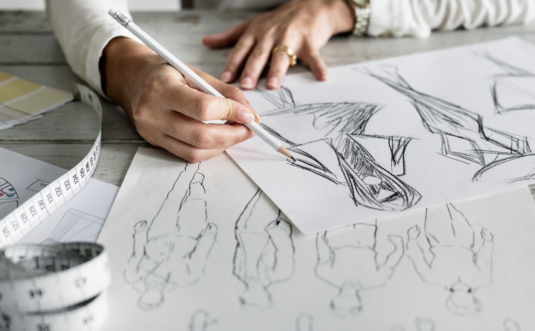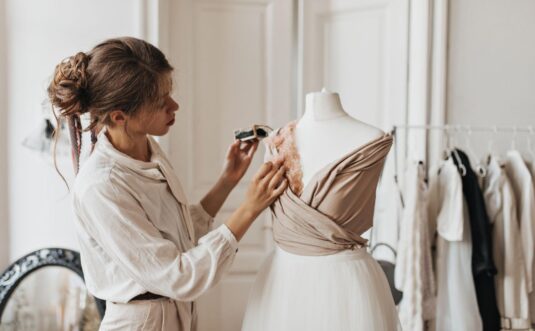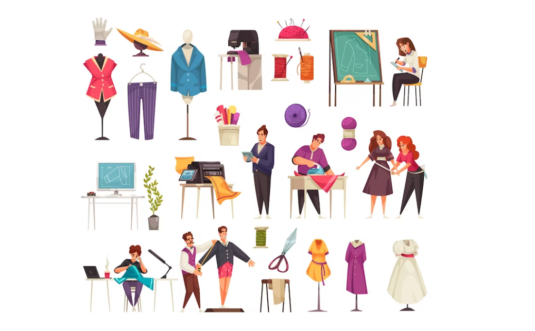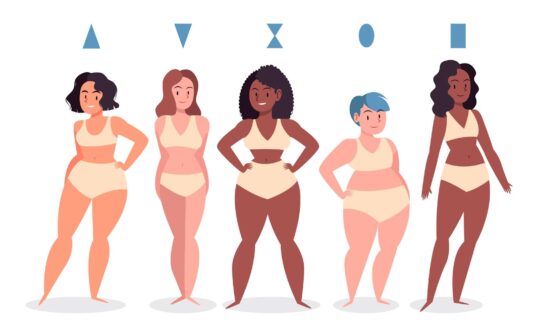Engage with the captivating sphere of apparel creation as we take a deep dive into the elaborate steps behind conceiving and producing captivating attire.
The art of apparel creation is a mesmerizing and complex journey that comprises various phases, from ideation to manufacturing. For budding style architects and clothing aficionados, comprehending each facet of this artistic voyage is imperative.
In this step-by-step guide, we take an in-depth look into the realm of apparel design, spotlighting its key components and illuminating the various stages entailed.
Grasping the Fundamentals of Apparel Design
Before immersing oneself in the complexities of clothing design, it is crucial to understand the basic principles of this inventive domain. The creation of apparel hinges on an optimal balance between artistic expression and pragmatism.
Apparel design extends beyond merely crafting aesthetically pleasing attire; it serves as an art form that empowers creators to convey their distinctive viewpoints and ideas. It becomes a narrative device, with garments acting as the channel through which style architects communicate their vision to the world.
Style architects draw inspiration from a myriad of sources, including natural phenomena, cultural narratives, historical events, and personal encounters. They keenly observe their surroundings, taking note of the most minute details and discovering beauty in unforeseen locations. This ability to perceive splendor in the mundane truly distinguishes them.
Creativity’s Integral Role in Apparel Design
The core of fashion design (FD) is creativity. It serves as the propelling force that ignites the inventiveness and distinctiveness of a style architect’s creations. Creative individuals have an acute awareness of fashion trends, color schemes, and silhouettes, enabling them to conceive remarkable art pieces that mesmerize onlookers.
In the realm of clothing design, creativity transcends the mere generation of new concepts. It entails pushing the envelope, defying traditional norms, and thinking innovatively. Style architects perpetually aim to produce something fresh and unique, a design that offers a fresh perspective.

Furthermore, the influence of creativity in apparel design is not confined to the design journey. It permeates every facet of the fashion realm, spanning marketing, branding, and presentation. From runway shows to advertising campaigns, designers leverage their creative prowess to craft a unified and captivating narrative that strikes a chord with their intended demographic.
Pivotal Aspects of Apparel Design
Creativity, while indispensable, is fortified by several essential elements that serve as the cornerstone of every garment creation. These constituents include shape, line, texture, color, and form. Comprehending how these facets interact and harmonize with each other is key to creating visually enticing designs:
- Shape pertains to the general outline or structure of a garment. Influenced by factors such as the body profile of the wearer, the desired aesthetic appeal, and the functional purpose of the outfit, style architects deliberate extensively on shape to ensure that their creations enhance the body and yield a balanced silhouette;
- Line holds a substantial role in apparel design, guiding the viewer’s gaze and stimulating visual intrigue. Lines can be linear, curved, or angular, with architects tactically using lines to foster movement, accentuate specific regions, or establish equilibrium in their creations;
- Texture contributes depth and tactile allure to clothing designs. This is achieved via fabric selection, embellishments, and surface treatments. Style creators play with varied textures to instill contrast, amplify visual fascination, and stimulate particular feelings or moods;
- Color serves as a formidable instrument here, capable of stirring emotions, establishing ambiance, and transmitting messages. Stylists meticulously opt for color schemes that resonate with their design premise and the anticipated emotional response from viewers. They factor in cultural connotations, color psychology, and prevailing trends when deciding the hues for their creations;
- Form is linked to the three-dimensional contour and framework of a garment, taking into account construction techniques, draping, and fit. Fashion creators pay acute attention to form to ensure their creations are visually appealing, functional, and comfortable for the wearer.

The Apparel Design Journey
With a firm understanding of the essentials of apparel design in hand, the initial steps of the journey can commence. These steps encompass conceptualization, illustration, and refining of ideas to establish a unified blueprint.
The odyssey of a style architect ignites with an inspirational trigger. It could be an exquisite sunset, a captivating work of art, or an enriching conversation. This inspiration lays the groundwork for the entire journey. To genuinely grasp the rhythm of the style universe, creators plunge themselves into thorough research:
- Probing current style trends is pivotal to maintaining relevance in this rapidly evolving sector. Style creators immerse themselves in fashion publications, participate in style exhibits, and engage with social media platforms to glean insights into trending and fading styles. They also analyze their target audience, deciphering their preferences, desires, and ambitions;
- Armed with an abundance of knowledge and inspiration, creators venture into the concept development stage. Here, their creativity soars, as they generate ideas and explore diverse possibilities. Sketching, doodling, and unleashing their imaginations become their tools for crafting the initial seeds of their design.
Concept Development in Fashion Design: Unveiling the Creative Genesis
The concept development stage entails a comprehensive exploration of current style trends, drawing inspiration from diverse sources, and engaging in the exhilarating process of idea generation. Creators immerse themselves in a meticulous analysis of the target demographic, market demands, and emerging fashion movements, enabling them to formulate a distinctive and compelling concept for their creations.
During this creative phase, designers curate mood boards, visual collages brimming with captivating imagery, fabrics, colors, and textures that encapsulate the very essence of their concept. They embark on an expedition of experimentation, traversing the realms of nature, history, culture, and even the realms of fantasy. This process serves as an invaluable tool for refining their vision and establishing a robust foundation for their pieces of art.
Collaboration emerges as a potent force in concept development. Designers actively seek the input and perspectives of their peers, fostering an environment of open dialogue, feedback, and imaginative brainstorming sessions. Through these interactions, they ensure that their concept flourishes into a well-rounded and resonant embodiment that strikes a chord with their target audience.
Sketching and Illustration Techniques
Sketching and illustration techniques stand as indispensable pillars in the realm of FD. These tools enable fashion artists to transcend ideas from the realms of imagination onto the realm of paper, breathing life into their concepts. The integration of diverse sketching and illustration techniques empowers stylists to refine their designs, capturing every intricate detail with precision and clarity:
- Fashion craftsmen commence their creative process by sketching rough outlines, capturing the overarching silhouette and proportions of their envisioned garments. They embrace experimentation, exploring various poses and angles to envision how the garment will manifest from different perspectives. Gradually, they infuse their sketches with greater intricacy, refining lines and embellishing them with delicate elements such as pleats, buttons, or embroidery, in order to manifest their creative vision;
- Illustration techniques further elevate the visual representation. Fashion architects venture into the realm of diverse mediums, such as watercolors, markers, or digital tools, breathing vibrant life into their sketches. Through skillful play with shading, texture, and color, they bring forth a vivid and realistic portrayal of the garments they envision.
Throughout the iterative process of sketching and illustration, designers maintain an unwavering commitment to evaluation and refinement. Seeking invaluable feedback from mentors, industry experts, and even potential customers, they ensure their creations resonate harmoniously with their intended audience, embodying both creativity and practicality.
Material Selection in Fashion Design: Weaving the Fabric Story
Having traversed the initial stages, designers now embark on the pivotal journey of material selection. This stage entails an intricate understanding of various fabric types and their specific applications, while simultaneously recognizing the profound impact that color and texture have on the creation of visually captivating designs.
Understanding Fabric Types:
- Fashion engineers delve into the realm of textiles, acquainting themselves with an array of fabric types, ranging from silk to cotton, from velvet to denim. Each fabric possesses unique characteristics, such as drape, weight, and stretch, which profoundly impact the final outcome of a garment;
- Through meticulous research and hands-on exploration, archictects develop an astute understanding of the different properties and qualities of fabrics. This knowledge enables them to make informed decisions about which fabrics will best bring their creations to life.
Significance of Color and Texture:
- Color is an influential component in FD, capable of evoking emotions, capturing attention, and establishing brand identity. Designers consider the psychological and cultural associations of colors, creating harmonious palettes that align with their concepts and resonate with their target audience;
- Texture adds depth and tactile allure to garments, creating visual interest and engaging the senses of the wearer and the observer. Designers carefully consider the texture of fabrics and the surface treatments that can be applied to enhance the overall aesthetic of their designs. They experiment with different textures, such as smooth, rough, or textured surfaces, to create contrast and visual intrigue.
Tips for Material Selection:
- Research and familiarize yourself with various fabric types, their properties, and their best applications in garment construction. Understanding the characteristics of different fabrics will help you choose the most suitable ones for your design;
- Consider the functional requirements of the garment. For example, if you’re working on activewear, look for moisture-wicking and breathable fabrics. If you’re creating eveningwear, opt for luxurious and flowy fabrics;
- Pay attention to the season and climate when selecting fabrics. Light and breathable fabrics like linen or cotton are ideal for summer, while heavier fabrics such as wool or cashmere provide warmth in winter;
- Experiment with color and texture combinations to create unique and visually appealing designs. Play with contrasting textures or combine fabrics with different finishes to add depth and visual interest to your garments;
- Seek input from fabric suppliers, fellow experts, or industry experts for recommendations and insights on fabric selection. They can provide valuable guidance on the quality, availability, and performance of different fabrics.
By carefully selecting materials, fashion creators weave a fabric story that enhances the visual impact, comfort, and functionality of their pieces of art. The right combination of fabric types, colors, and textures brings depth, character, and an element of allure to their creations, captivating the audience and elevating the overall aesthetic appeal of the garments.
Conclusion
Understanding the key elements of FD, such as shape, line, texture, color, and form, provides a solid foundation for creating visually compelling masterpieces. The concept development stage allows designers to explore current trends, gather inspiration, and collaborate with peers to refine their creative vision.
Sketching and illustration techniques serve as essential tools for translating ideas onto paper, breathing life into designs with precision and clarity. Material selection, with its emphasis on fabric types, colors, and textures, plays a crucial role in bringing the envisioned garments to life. By carefully considering these elements and engaging in meticulous research, fashion stylists can create garments that not only reflect their unique perspectives but also resonate with their target audience.




